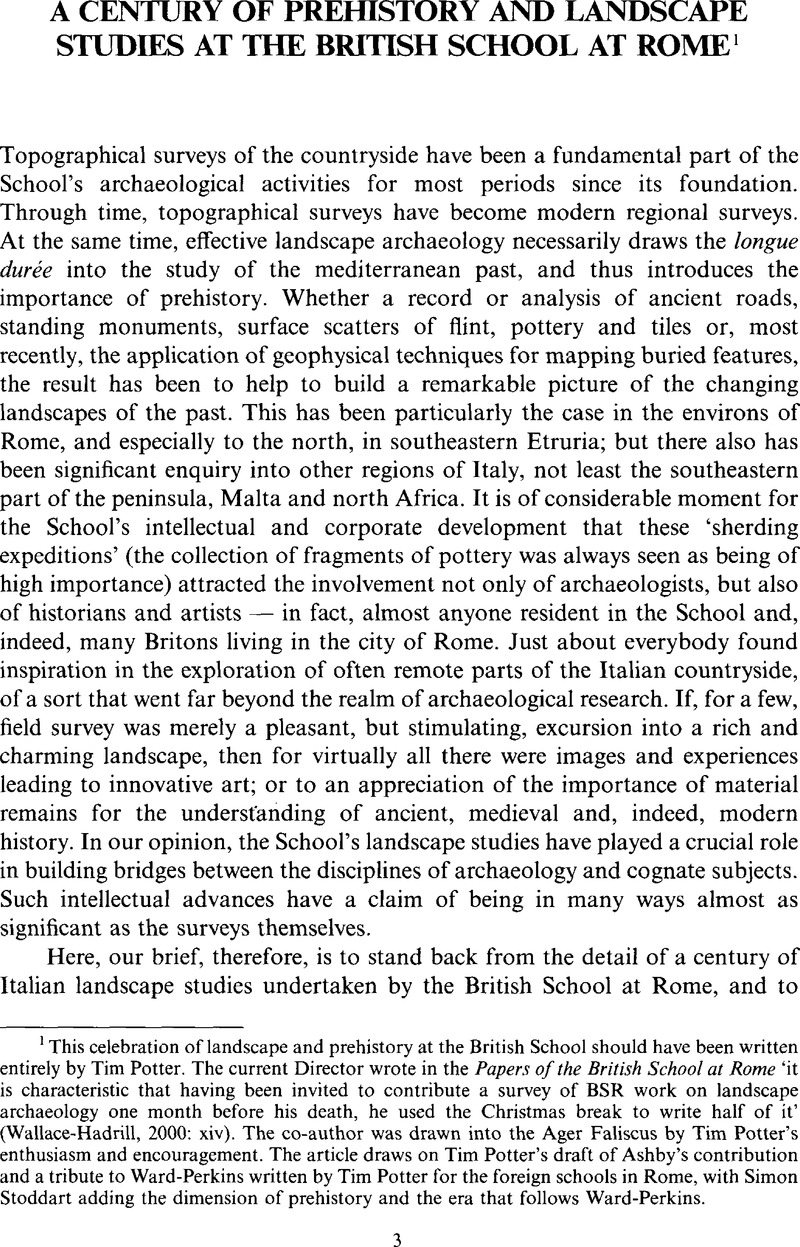Crossref Citations
This article has been cited by the following publications. This list is generated based on data provided by
Crossref.
di Gennaro, Francesco
Cerasuolo, Orlando
Colonna, Cecilia
Rajala, Ulla
Stoddart, Simon
and
Whitehead, Nicholas
2002.
Recent Research on the City and Territory of Nepi (VT).
Papers of the British School at Rome,
Vol. 70,
Issue. ,
p.
29.
Stoddart, Simon
2002.
Trends in ANTIQUITY.
Antiquity,
Vol. 76,
Issue. 294,
p.
1115.
Perchuk, Alison Locke
2016.
Schismatic (Re)Visions: Sant’Elia near Nepi and Sta. Maria in Trastevere in Rome, 1120–1143.
Gesta,
Vol. 55,
Issue. 2,
p.
179.
Smith, Christopher
2018.
J.B. WARD-PERKINS, THE BSR AND THE LANDSCAPE TRADITION IN POST-WAR ITALIAN ARCHAEOLOGY.
Papers of the British School at Rome,
Vol. 86,
Issue. ,
p.
271.
Launaro, Alessandro
2018.
Encyclopedia of Global Archaeology.
p.
1.
Stoddart, Simon
Palmisano, Alessio
Redhouse, David
Barker, Graeme
di Paola, Giorgia
Motta, Laura
Rasmussen, Tom
Samuels, Troy
and
Witcher, Robert
2020.
Patterns of Etruscan Urbanism.
Frontiers in Digital Humanities,
Vol. 7,
Issue. ,
Launaro, Alessandro
2020.
Encyclopedia of Global Archaeology.
p.
10394.
Stoddart, Simon
2020.
Power and Place in Etruria.
Attema, Peter
2022.
Genealogy and interpretive potential of an iconic regional survey project: The British School at Rome's Tiber Valley Project - H. Patterson, R. Witcher, and H. Di Giuseppe [contr. by M. Millett, S. Keay, and C. Smith; preface by A. Wallace-Hadrill]. 2020. The Changing Landscapes of Rome's Northern Hinterland. The British School at Rome's Tiber Valley Project, Archaeopress Roman Archaeology 70. Oxford: Archaeopress..
Journal of Roman Archaeology,
Vol. 35,
Issue. 1,
p.
422.
Ortoleva, Jacqueline
2022.
Making Sense of Landscape: A New Study of Sound Propagation between Tarquinian Funerary and Habitation Settings.
Etruscan and Italic Studies,
Vol. 25,
Issue. 1-2,
p.
79.
Knodell, Alex R.
Wilkinson, Toby C.
Leppard, Thomas P.
and
Orengo, Hector A.
2023.
Survey Archaeology in the Mediterranean World: Regional Traditions and Contributions to Long-Term History.
Journal of Archaeological Research,
Vol. 31,
Issue. 2,
p.
263.





